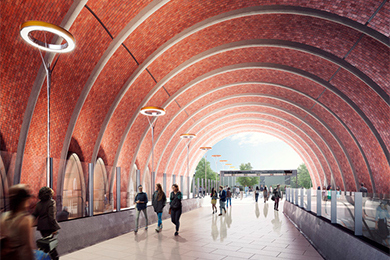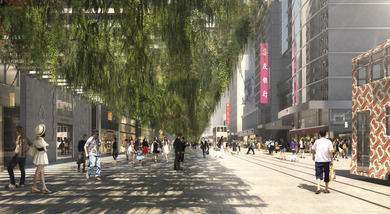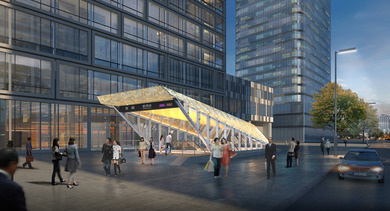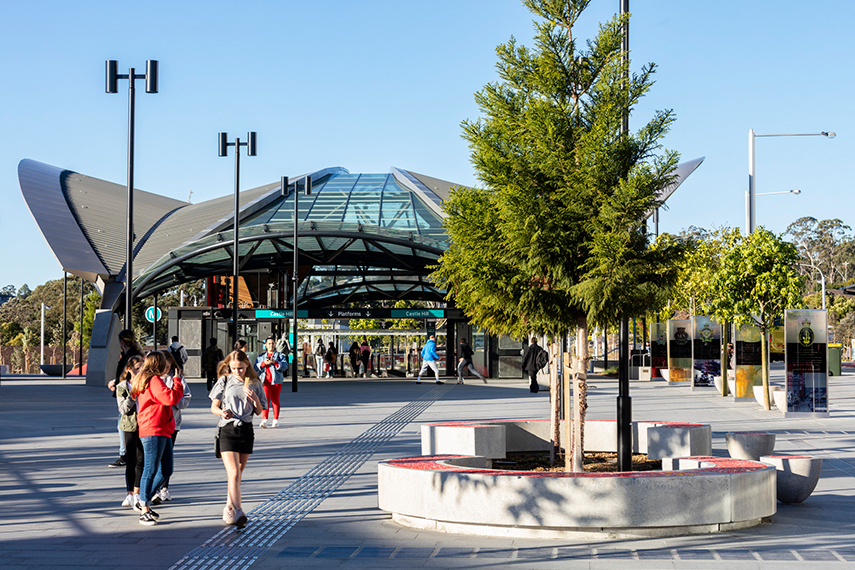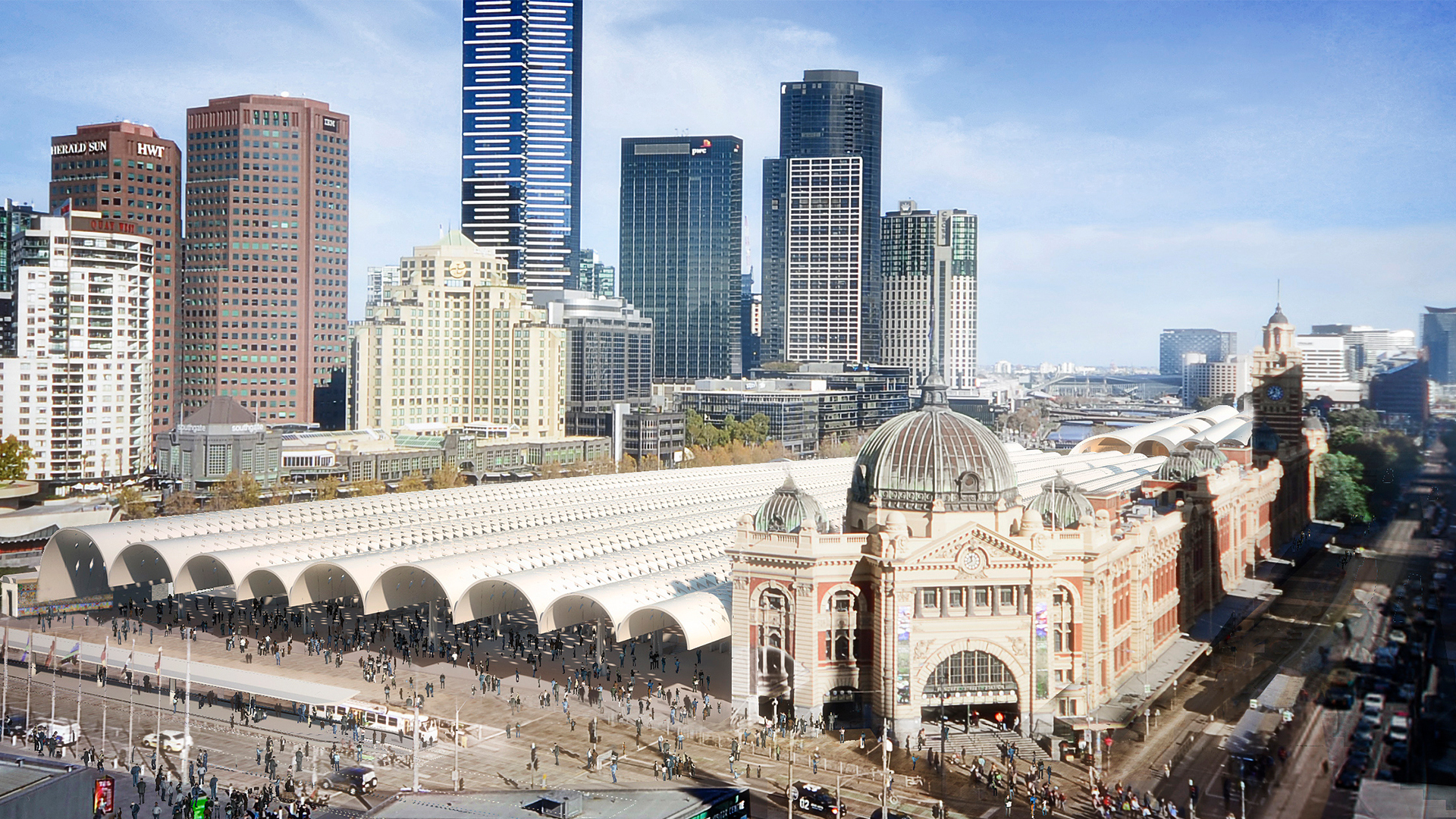Stations for superdense cities
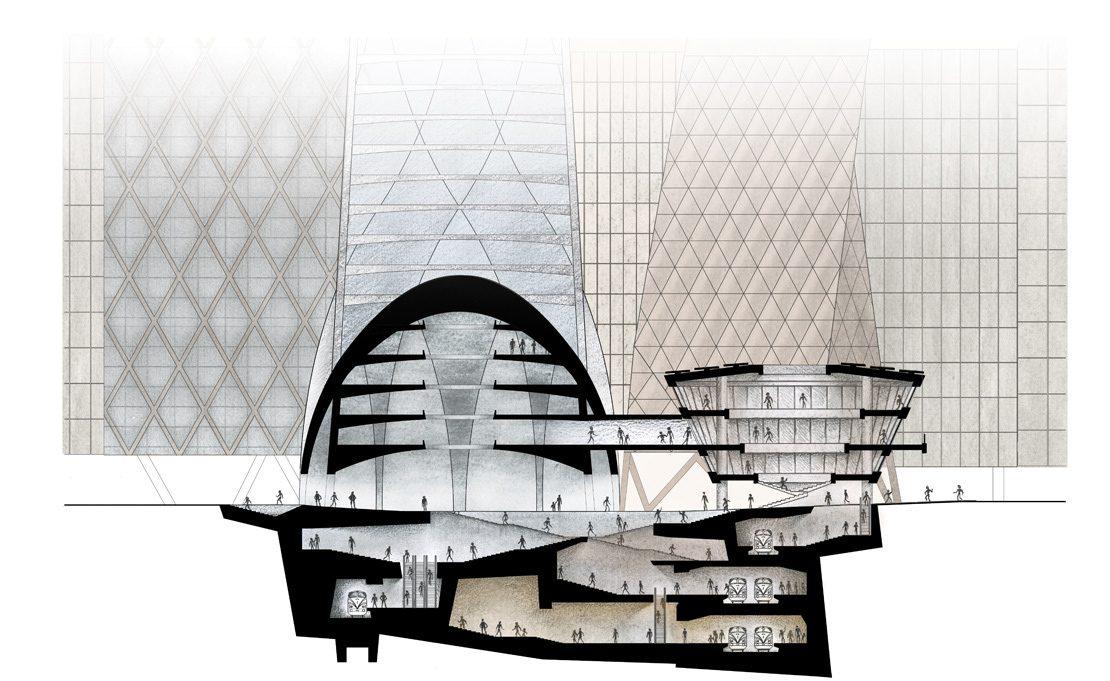
Distributed station entrances are the key to Hong Kong’s superdensity
By Peter Morley with illustration by Steve Tran
Hong Kong’s amazing superdensity of up to 60 thousand people per square kilometre is possible because most people don’t have cars. Eighty per cent of all journeys are on public transport and almost half the remaining trips are by taxi. Minimising private car usage means Hong Kong can be very efficient with its limited urban space.
As in most cities, there’s a clear link between density, property value and public transit access. Hong Kong’s public transport capacity comes from the Mass Transit Railway (MTR) network that threads its way below the city’s amazing skyline.
The city’s silhouette of towers is like a supergraphic of property prices: the taller and denser the buildings, the higher the real estate value. Overlay a selling agent’s map with the MTR map and it’s easy to see that Hong Kong’s land values correlate with the rail network service underneath.
Density creates some problems, one of which is that Hong Kong’s pavements are narrow and often overcrowded. A public transport network is efficient if it enables easy interchange between trains, buses, trams and taxis. These interchanges need valuable space.
Kwun Tong, with 60,560 people per sqkm, was the most densely populated district among Hong Kong’s District Council in 2018.
Source: Government of Hong Kong Census and Statistics Department
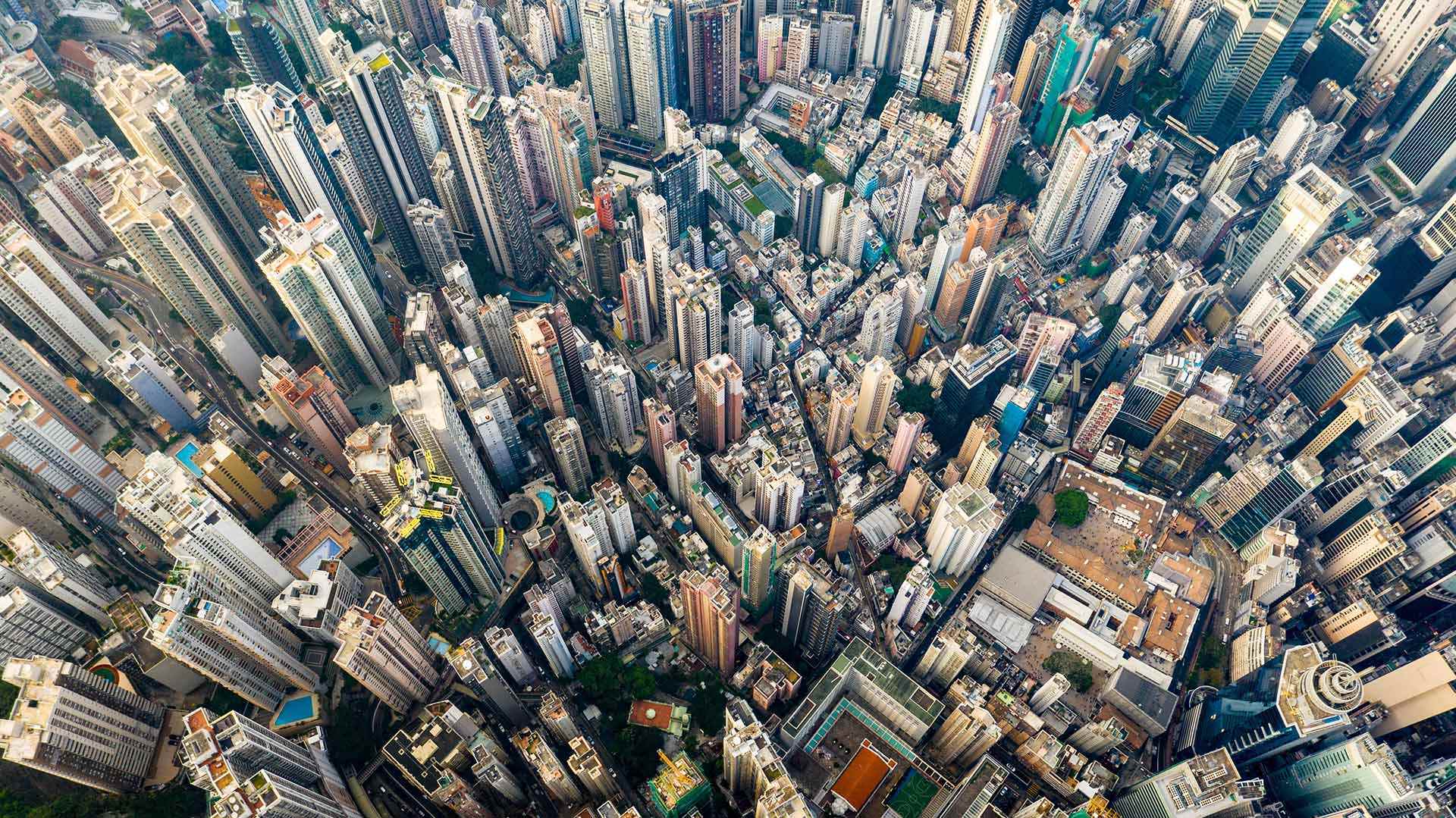
EXTENDING THE VALUE OF THE STATION
In many cities around the world, typical train station entrances include plazas dominated by cars and buses. This is often a consequence of designing train stations with a primary ‘gateway’ entrance.
A single station entrance limits the real estate uplift that a train station can provide to a smaller urban area. But a distributed model has multiple station entrances throughout the wider surrounding area. In Hong Kong, most MTR stations have four or more entrances, and some have up to ten, all connected by underground or overground pedestrian links. This design widens an individual train station’s footprint far beyond its concourse.
It also means that we can locate points for transport interchange on more than one street location. This disperses pedestrian movement and minimises pavement overcrowding. And it distributes the economic uplift of close station entrances over a wider urban area, benefiting a much larger part of the community.
Hong Kong’s MTR and Airport Express networks comprise a total of 93 stations and carry an average of about 4.97M passengers per day.
Source: GovHK
THE RAIL+PROPERTY MODEL
Another way of spreading the impact and value of a station is to integrate it with surrounding precincts. MTR station concourse buildings have entrances to nearby retail, commercial or residential developments. Bus and taxi interchanges are often located at the base of these buildings.
This development model – termed ‘Rail+Property’ by MTR – shows the value of planning integrated developments above and around stations. It’s a solution that provides convenience for passengers as well as sources of revenue to fund the infrastructure.
But this model depends on surrounding land ownership and access to the revenue generated by building the development. Many cities need new infrastructure in existing urban areas where land ownership is complex. This makes it challenging to deliver the Rail+Property model. MTR also faces similar issues as they upgrade and expand infrastructure on an ageing network.

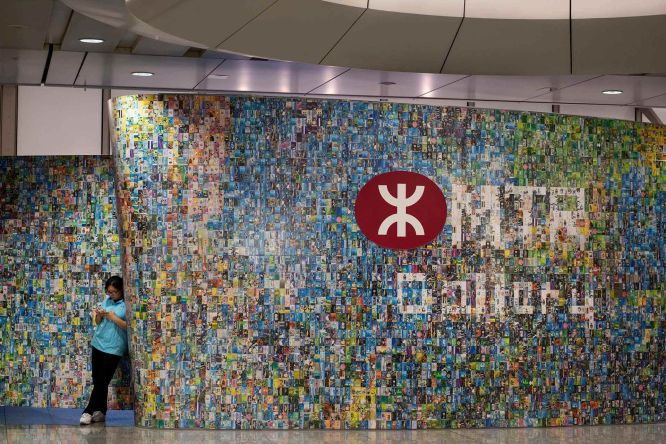
COMPLEX CHALLENGES AND LONG-TERM BENEFITS
With barriers to integrating with surrounding developments, the alternative is to create underground corridors linking station entrances. But building below congested urban roads is challenging. The process of acquiring land, upsetting residents and avoiding existing infrastructure is costly. It can be easier to minimise the station footprint to get the job done.
There’s also the challenge of maintaining and policing long corridors and multiple entrances. Creating retail opportunities for these passageways provides revenue and ‘passive’ policing. Food and beverage outlets are popular with passengers but there are only so many convenience stores a station can support. Underground retail also adds more construction, servicing, ventilation and emergency escape needs.
Designing these passageways to be passenger friendly and inviting requires investment. MTR has improved the stark, dimly-lit passageways of its older stations with better lighting, interior finishes and art.
Despite delivery challenges, Hong Kong shows that the distributed station entrance model works well. It requires vision and a large investment of time and money to get right, but the payoff is huge. MTR’s infrastructure and approach to station planning is the secret to the success of Hong Kong’s incredible urban density. Other cities can apply this approach to create enduring positive economic and social impact.

